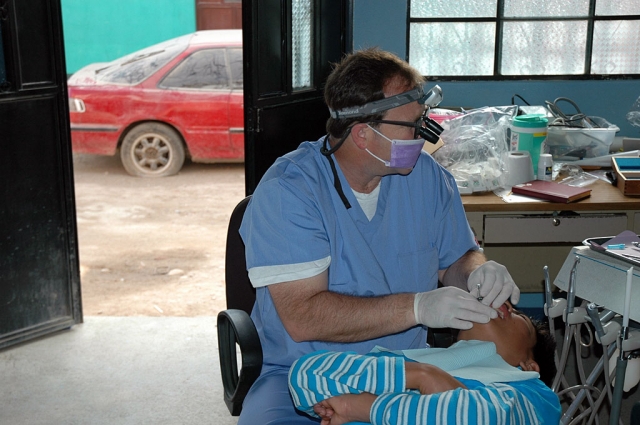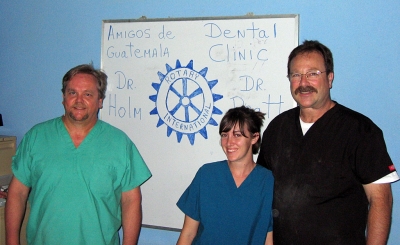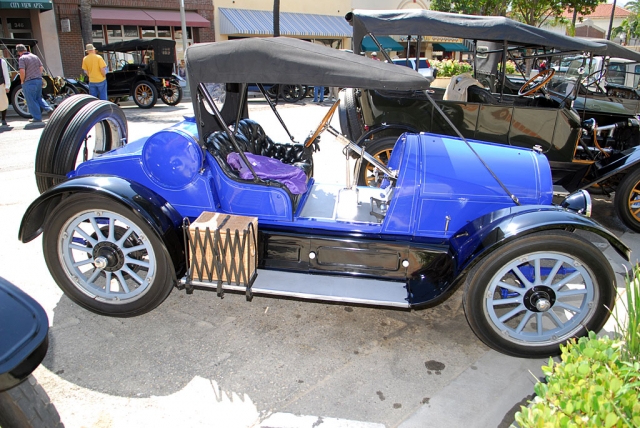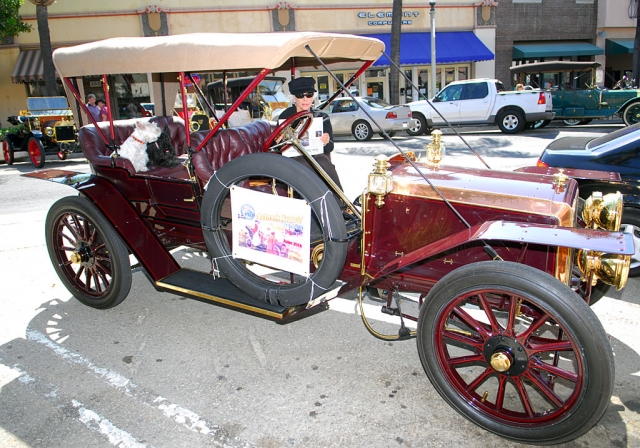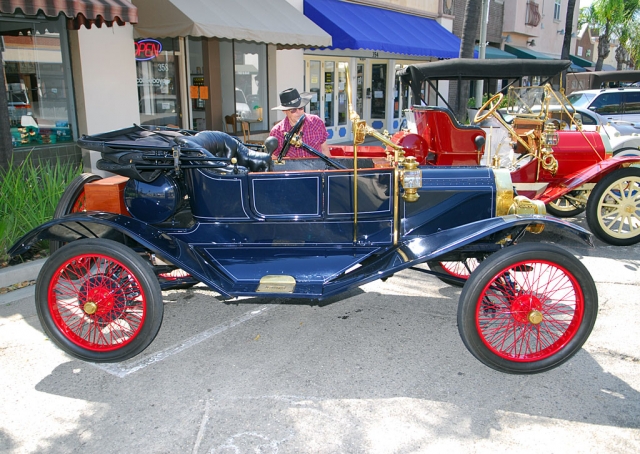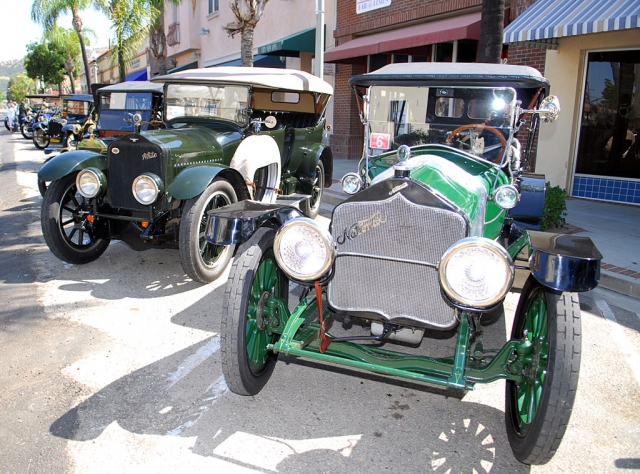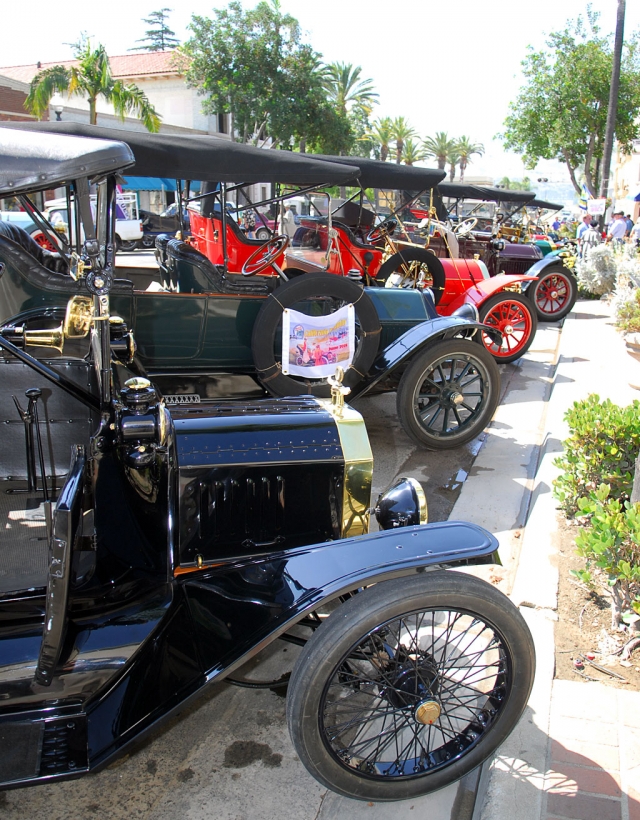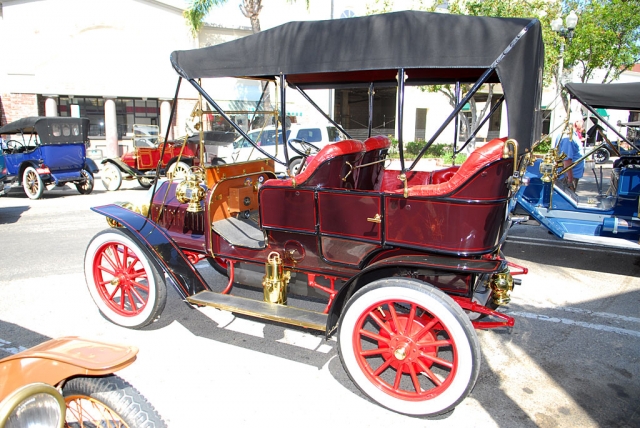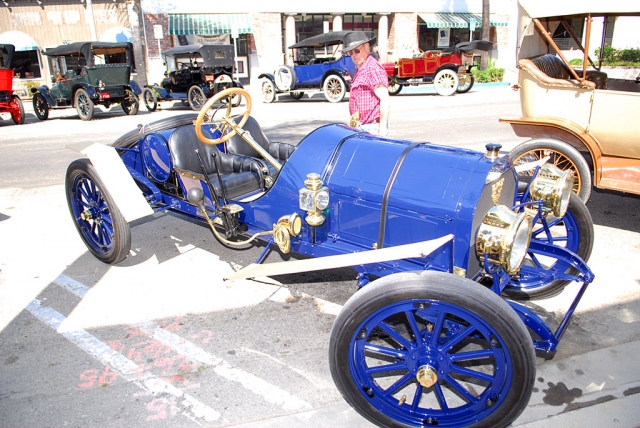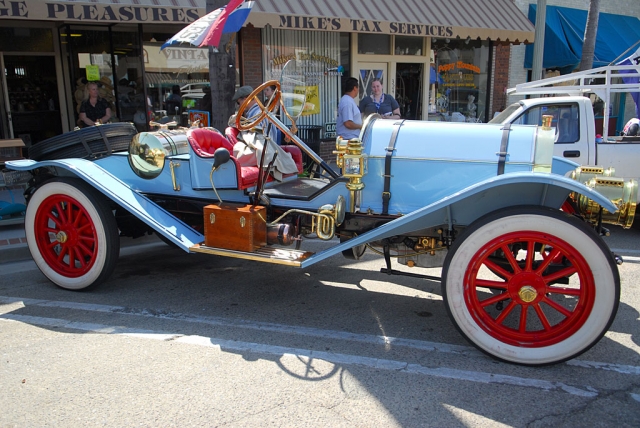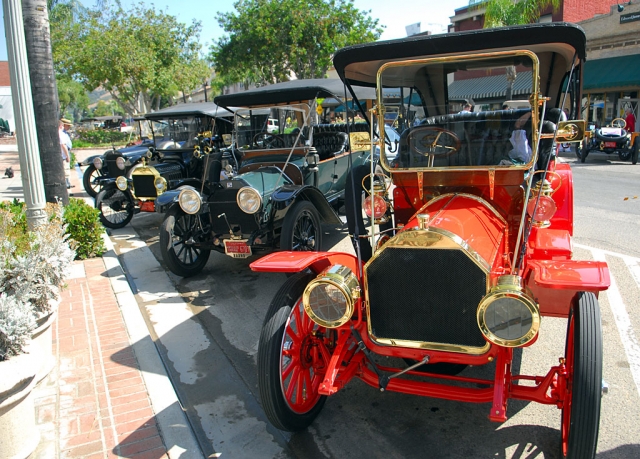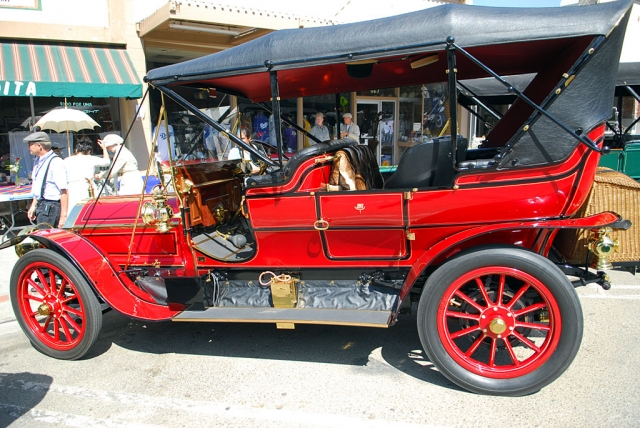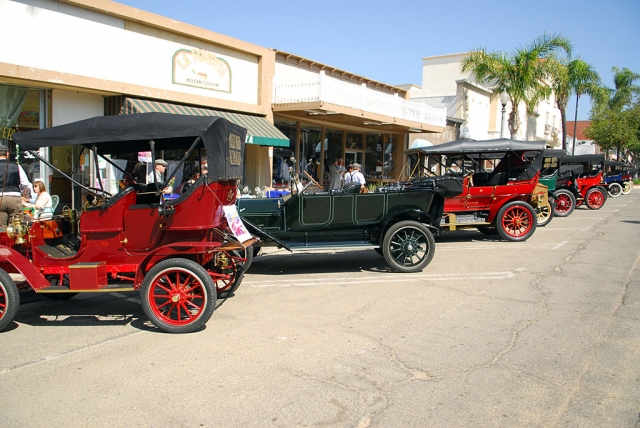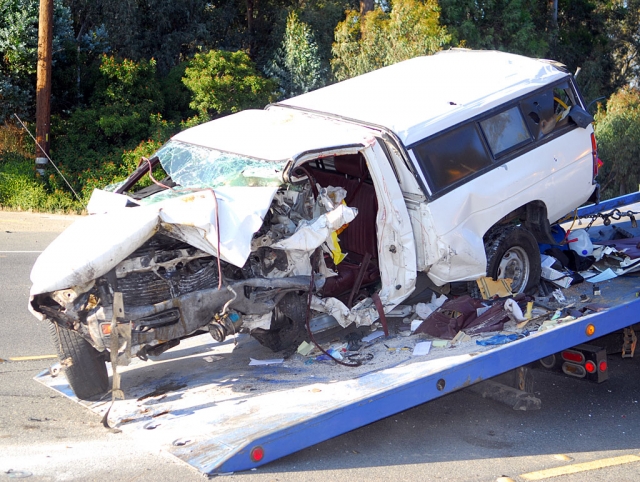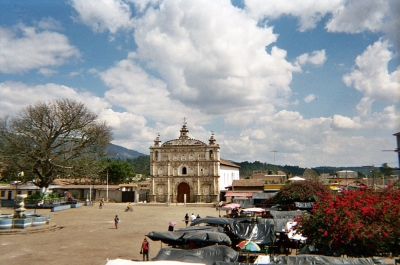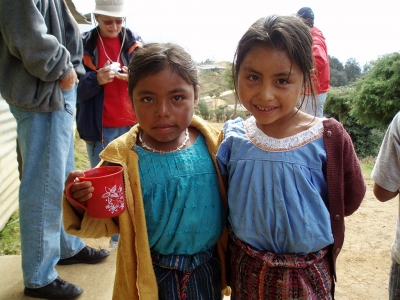 At 3:25 p.m., Tuesday, a Suzuki motorcycle struck a three-quarter ton Dodge pickup on Highway 126 at Cavin Road. According to one witness, the motorcycle was traveling at a high rate of speed, eastbound, before striking the truck. The driver of the truck was attempting a left turn, heading westward. The motorcycle driver was thrown from his bike and the bike traveled for a considerable distance after the collision. The biker was airlifted from the scene with undisclosed injuries. Enlarge Photo By Anonymous — Wednesday, June 11th, 2008
|
|
By Dick Diaz — Wednesday, June 4th, 2008
2002 Fillmore High School Graduate, Now Stationed at Aviano, Italy
This article began with an email from the older brother of Pedro Rivera-Aparicio, Roque Rivera. Roque asked me if it was possible for me to do an article about his brother, without his brother being contacted for the information I needed. His request was because he wanted to surprise his brother with the article. Roque told me that Pedro would be proud that his community would want to honor him with an article about his service in the United States Air Force. Although unusual I thought it was a worthy cause and enlisted Rogue as my assistant in gathering the necessary information. Now that the article has been written and I have gotten to know Pedro, through Roque, I am thankful that I was allowed to participate in Roque’s surprise for his brother Pedro! |
|
By Wanda Castel de Oro — Wednesday, June 4th, 2008
An editorial by Wanda Castel de Oro
Remember the old tv show “Who’s the Boss?” That’s what I’ve been wondering lately while observing the last two meetings at the Fillmore Senior Center. |
|
By Joyce Schifanelli — Wednesday, June 4th, 2008
Part Two
Dr. Mark Pratt, a local dentist and his daughter Kristyn, a Cal State Northridge student of speech pathology, recently returned from a humanitarian adventure. They traveled to the tiny, northern mountain village of Zacualpa, Guatemala, administering urgently needed dental care for its inhabitants and those of the remote Mayan village of Turbala. Father and daughter participated in a two-week hands-on-project coordinated by Amigos de Guatemala, a partnership created by Rotary Clubs International to provide quality international service projects in the Quiche district of the impoverished country. Dr. Pratt and his daughter report treating as many as fifteen patients a day per dentist, performing simple and surgical extractions, fillings, root canals and cleanings. Every child required major dental work and most visitors to the clinic, child or adult, were in varying degrees of pain. None had ever been seen by a professional dentist. Untrained practices and home remedies, administered without antibiotics or anesthesia are a normal course of treatment. Donated dental services exceeded over $40,000 in value. The climate is warm and damp. Southwestern lowlands border the Pacific Ocean, while Belize and the Caribbean Sea create the country’s northeastern boundary. Most of the topography is hilly or mountainous, interspersed with high valleys, grassy plains and forests. Timber, chrome, silver, gold, copper, iron and lead are natural resources. Nevertheless, agriculture is the primary industry with the raising, processing and exporting of crops including, sugarcane, coffee, bananas, cocoa, beans and rice, cotton, essential oils (citronella and lemon grass), and lumber. Hand crafted pottery is locally made and sold to tourists in village marketplaces. Guatemala appears to be a tropical paradise. However, the people who call this enchanting landscape home have often suffered violence, isolation, sickness, natural disasters and crushing poverty throughout their history. The first human settlers arrived in the area from the north, more than 10,000,000 years ago. Those original tribes cultivated maize around 3500 BC. Centuries later, another populace, the Mayans, one of the most advanced and studied ancient civilizations, succumbed to a horrific drought around 900AD. European explorers arrived in the early 15th century bringing epidemics that nearly devastated the native Quiche populations. Two hundred years later, Spanish Conquistadors overran Guatemala. Though not as abundant in gold and silver as Mexico and Peru, during these centuries, plunderers stripped the territory’s natural wealth of sugarcane, blue dyes, cocoa and magnificent precious woods, shipping them to Spain to enrich kings and queens, palaces, churches, the aristocracy and themselves. In 1821, Guatemala won its independence from Spain and was incorporated into the Mexican empire, eventually separating to become an independent country of revolts and revolutions. During the 1870’s coffee became an important crop. The United States wielded considerable influence on the struggling country during the Cold War years with the USSR (1950-1990), supporting the Guatemalan Army with training, weaponry and funds. The CIA played a significant roll in overthrowing a freely elected president in a 1954 coup d’etat. In 1961, the Guatemalan government provided airfields to the United States during the Bay of Pigs invasion, and authorized military training for 5,000 anti-Castro Cubans. Guatemala’s modern history has been fraught with guerilla groups, rightwing paramilitary organizations, death squads, torture, revolts, civil wars, overthrown governments, disappearances, scorched earth policies and government sponsored genocide against indigenous populations in addition to loss of life from severe earthquakes, massive flooding and mudslides from hurricanes and four active volcanoes. As recently as 1982, 45,000 Guatemalans fled to Mexico to live in camps. The year 1996 brought peace accords ending decades of civil war. Successful democratic presidential elections followed. Free trade agreements have been implemented with other Central American countries and Mexico. Nevertheless, the country ranks amongst the highest in the world in murder rates and lowest in convictions. Despite moving into modern times, Guatemala City (the capitol), population 2,000,000, is nearly the only place where professional medical and dental attention is readily available. An additional 5,000,000 people live within the urban area. Distance and poverty prevent the balance of the population from receiving services. The average farm-worker earns $1 per day, leaving more than 56% living below poverty levels, primarily in the highlands and mountainous regions. The government sponsors public elementary and secondary schools; however, students’ parents are responsible for uniforms, books and supplies. If their parents can spare the expense, poverty-stricken rural children often walk hours to reach local schools. In addition to public schools, private, paying schools are available to middle and upper class children primarily in urban areas. Sixty-nine percent of the population over fifteen years of age is illiterate, the lowest rate in Central America. In spite of cultural and language barriers, the inhabitants of Zacualpa, mainly Indian, and the Mayans of Turbala tried their best to accommodate the volunteers. Most volunteers roomed in the church convent in Zacualpa and the church-school children performed their native dance in a welcoming presentation. Several villagers volunteered their help and time, and some acted as translators. Although offered, none took money! The days flew by in a flurry of rewarding work, especially when the team saw the grateful smiles upon the faces of people with so little. Recognizing the tremendous needs of these forgotten people, Dr. Pratt plans to return next year with Amigos de Guatemala and minister to the poorest of the remote Mayan communities. He says that although the trip is difficult, the work hours long, the living and working conditions very poor, along with the strong possibility of getting sick from the food, Guatemala and its people have left an imprint that tugs upon his heart every day. Kristyn feels the same, and hopes she can accompany him again. |
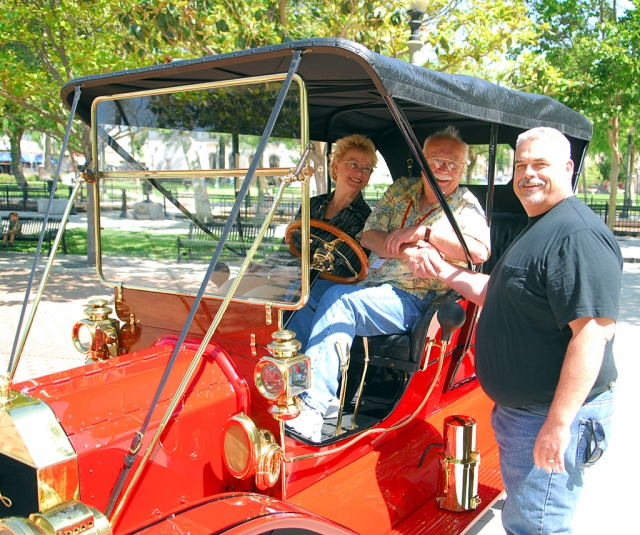 Mayor Steve Conaway greets members of the Southern California chapter of the Horseless Carriage Club of America in front of city hall. Club members paid an unexpected visit to Fillmore, Monday and treated residents to a glittering display of pre-1916 automobiles. Enlarge Photo By Anonymous — Wednesday, June 4th, 2008
|
|
By Anonymous — Saturday, May 31st, 2008
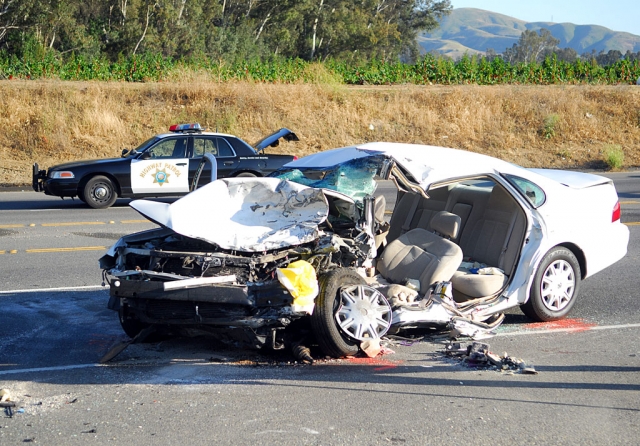 A head-on collision resulted in a double fatality on Friday, May 30th at approximately 4 p.m. on highway 126, just east of Old Telegraph Road. Kenneth Nemson, 58, of Elk Grove and Henry Charles Farner, 22, of Fillmore were both killed in the accident. Enlarge Photo |
 Fillmore’s war heroes honored at Middle School’s Pride in America Day. From left, Richard Schuck, Bud Untiedt, Victor Westerberg, William Preciado, J. C. Woods, Wendell Tilley, and John Pressey. This year’s program was attended by a disciplined and respectful student audience, and especially dedicated to Staff Sergeant Felix Gabriel Chavez, U.S. Army, who is recovering from severe injuries suffered by an improvised explosive device (IED) while fighting in Iraq. A special slide presentation was shown, with a thank you message from Gabriel Chavez. Enlarge Photo By Anonymous — Wednesday, May 28th, 2008
|
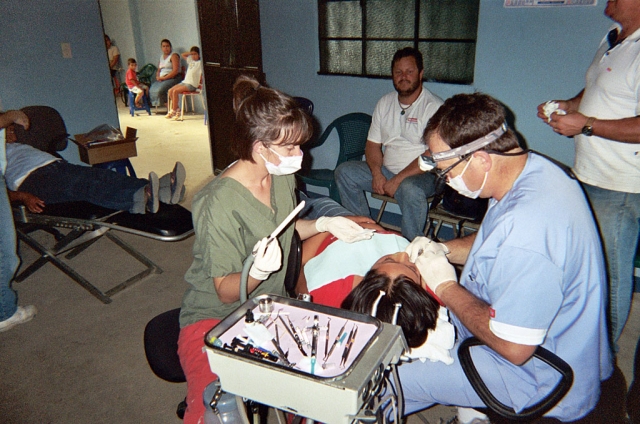 Fillmore dentist Dr. Mark Pratt and his daughter Kristyn, a Cal State Northridge student of speech pathology, recently returned from the village of Zacualpa, Guatemala, where they administered urgently needed dental care to its inhabitants and those of the remote Mayan village of Turbala. Enlarge Photo By Joyce Schifanelli — Wednesday, May 28th, 2008
Part One
Dr. Mark Pratt, a local dentist and his daughter Kristyn, a Cal State Northridge student of speech pathology, recently returned from a humanitarian adventure. They traveled to the tiny, northern mountain village of Zacualpa, Guatemala, administering urgently needed dental care for its inhabitants and those of the remote Mayan village of Turbala. Father and daughter participated in a two week hands-on-project coordinated by Amigos de Guatemala, a partnership created by Rotary Clubs International to provide quality international service projects in the Quiche district of the impoverished country. Mexico’s southern neighbor, Guatemala is a Central American country of 42,000 square miles and nearly 13,000,000 people. Although heavily laced with pure Indian, more than half of her people are of Spanish, Spanish and Indian, and European descent. There are many dialects in use, nevertheless Spanish is the official language and spoken by the majority. Fillmore dentist realizes humanitarian adventure Amigos de Guatemala Roman Catholic is the predominant religion in Guatemala, a republic since 1889. Upon a trip to the northern highlands of Guatemala, a Rotarian, Bob Hatmaker recognized the intense need of assistance of the region’s inhabitants, especially the Mayan population. He solicited other Rotarians to volunteer their time and funds, and the project Amigos de Guatemala was born. To date, nineteen Rotary Clubs, other service clubs and individuals, participate in the project volunteering time, securing donations of goods and services and raising funds. Twenty-six volunteers, responsible for their own travel expenses, participated during the two-week project, all with the goal to help improve the quality of life in Zacualpa, and the Mayan village of Turbala. The majority of volunteers labored laying brick, hauling fill, mixing cement and pouring concrete to build new school bathrooms, classrooms and a paved path through the rough terrain from Zacualpa to Turbala, location of the only public elementary school. Dr. Pratt, Dr. Rick Holm, from Marina, Ca. and Ms. Pratt set up dental facilities in a garage in Zacualpa. With little indoor plumbing and no sewer system, raw sewerage often floods the streets during the rainy season. Everyone prayed for good weather. From February 3 through February 9, the two dentists, along with assistance from Ms. Pratt, treated their patients’ decayed teeth and other serious dental problems with equipment and donated pharmaceuticals, including pain medications, antibiotics and dental hygienic supplies, carried from the United States. Dr. Pratt and his daughter report treating as many as fifteen patients a day per dentist, performing simple and surgical extractions, fillings, root canals and cleanings. Every child required major dental work and most visitors to the clinic, child or adult, were in varying degrees of pain. None had ever been seen by a professional dentist. Untrained practices and home remedies, administered without antibiotics or anesthesia are a normal course of treatment. Donated dental services exceeded over $40,000 in value. The prevalent lack of dental health is attributed to a mainstay diet of corn, poor oral hygiene and preventative measures. In addition, daily consumption of inexpensive candies and bagfuls of sugarcane-sweetened water is rampant among impoverished children. Villagers, most who earn their living from farming the single corn crop per year, appear twice as old as their years, and besides dental disease, suffer from malaria, yellow fever and other contagious illnesses, contracted when they or others work in the coastal areas harvesting sugarcane. To be continued in next week’s edition. |
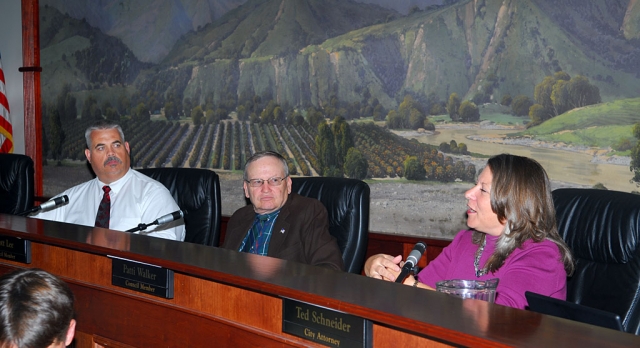 From left, Mayor Steve Conaway, Councilman Scott Lee, and Councilwoman Patti Walker, accomplished substantial business at Tuesday’s regular meeting, though two other council members were absent. Enlarge Photo By Anonymous — Wednesday, May 28th, 2008
City council agenda item 9-A, Request for Leave of Absence by Councilmember Lauri Hernandez, was unanimously approved at Tuesday’s regular city council meeting. |
|
By Anonymous — Thursday, May 22nd, 2008
Maximum Enforcement Period begins Friday, May 23, at 5 p.m.
The Memorial Day Maximum Enforcement Period (MEP) begins this Friday, May 23, at 5 p.m. and continues through midnight, the following Monday. Up to 80 percent of all California Highway Patrol (CHP) officers will be out working the road over the holiday weekend to help ensure everyone arrives at their destination safely. Three “don’ts” for all motorists to remember: Don’t speed. Don’t drink and drive. And don’t forget to wear your seatbelt. |




